Last week, I taught a course on garden and planting design at Coastal Maine Botanical Gardens. It was good for me to go back and re-learn all of the elements of design and how garden design has evolved over the ages. By preparing for this class, I began to see how modern designers such as Piet Oudolf experiment with what I will call “fusion design” to make their gardens successful and approachable.
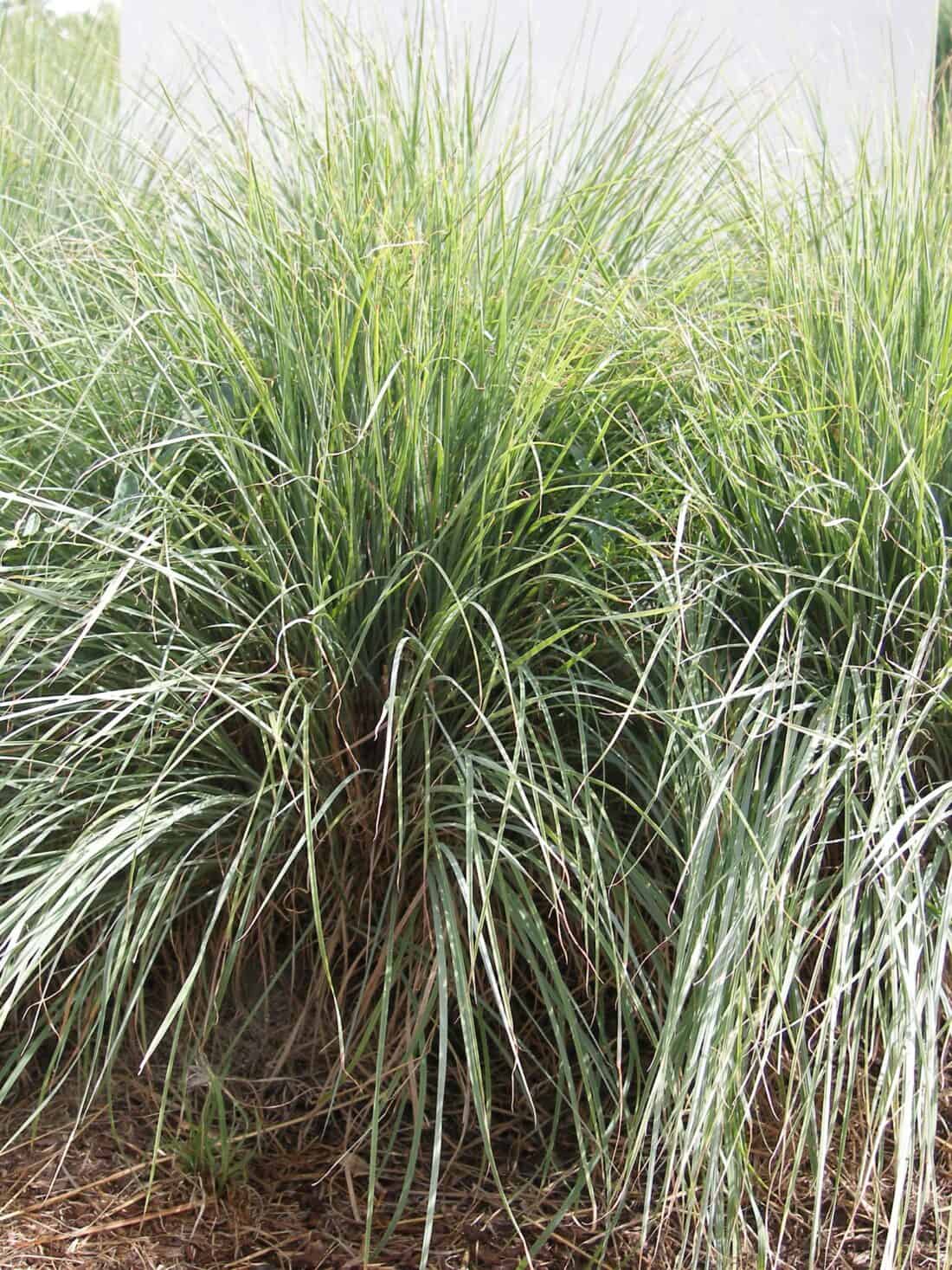
What Oudolf does is he takes elements of classical design (balance, symmetry, and proportion) and then softens the rigid lines with lush plantings. The plantings sometimes flow through the landscape like the raked gravel of a Japanese meditation garden. The wind causes taller perennials and grasses to sway, which adds the element of movement to the landscape.
I’d venture to say that many of his designs would not work without grasses and sedges. Of all of the grasses that we grow at CMBG, the one that has impressed me the most has been Schizachyrium scoparium, ‘The Blues.’ This fantastic grass, known by the common name of “little bluestem,” is native to the prairies of North America.
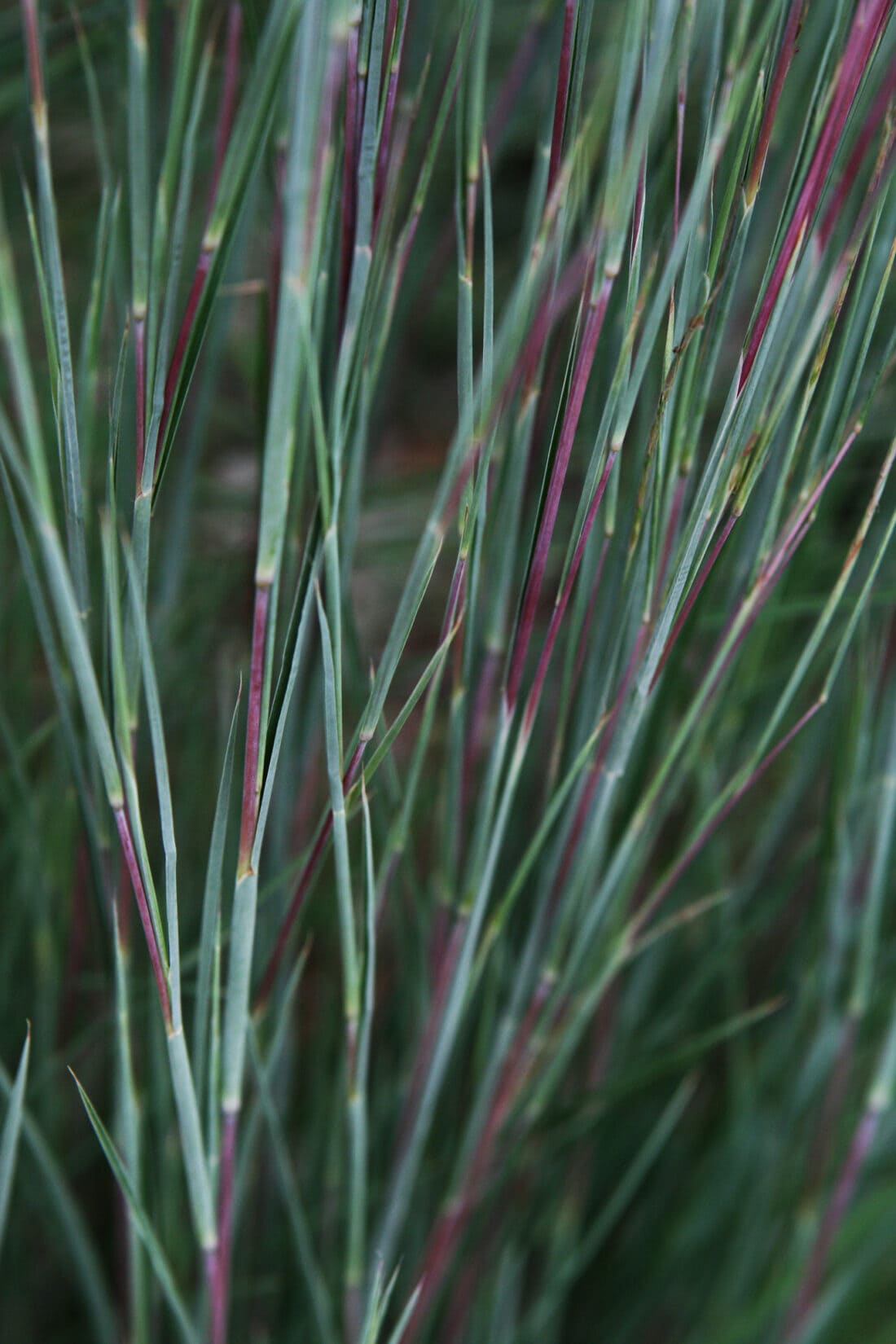
Schizachyrium scoparium ‘The Blues’
The Blues differ from the straight species because of the clumping, upright form of the flowers. The grass blades are gently arching to about 2′ in height by July. It is a beautiful warm season grass.
Then, in August, the flowering spikes shoot out from the foliage to about 4′ in height. Planted en masse, this grass makes a strong statement with its upright form. When the wind blows, these grasses carry out the movement that you see in an Oudolf landscape design.
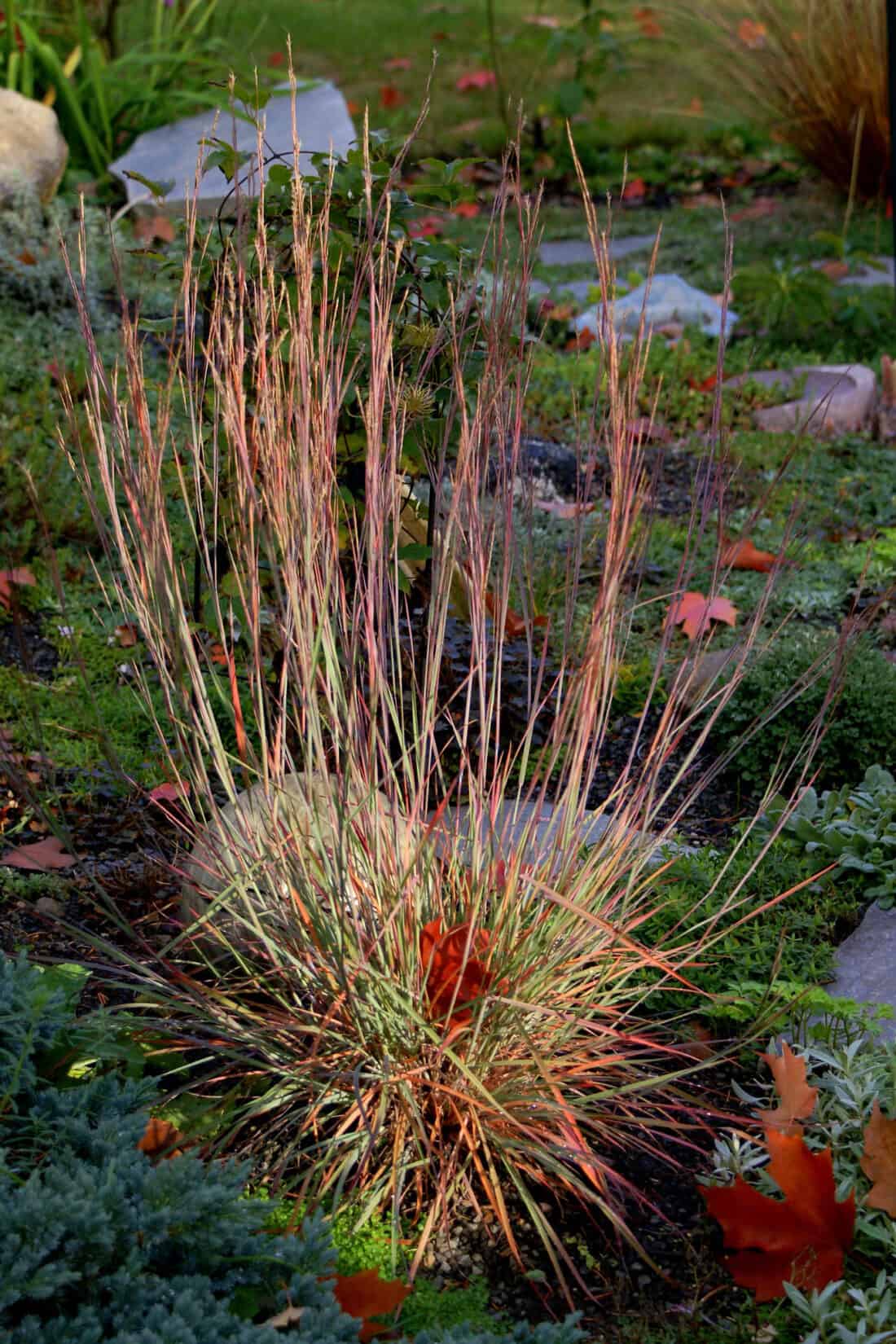
All Schizachyrium scoparium appreciate full sun and well-drained soil. If they get too much shade or are too wet, they will flop or begin to thin out. In the fall, the grasses stay upright but change color to a light wheat brown.
The grass blades and flower stalks will stay upright until snow and ice bend them down to the ground. By late winter, you will be tired of looking at their messiness – so you can cut it back in early spring before the new foliage emerges from the base.
Leaving native grasses through the winter will provide a host plant for a variety of animals and insects, including the ottoe skipper, the dusted skipper, small mammals, and upland gamebirds. These species have seen much of their habitat. (tallgrass prairies full of native plants) lost to development and farming.
Are you growing little bluestem? If so, what do you think about it?
–Rodney
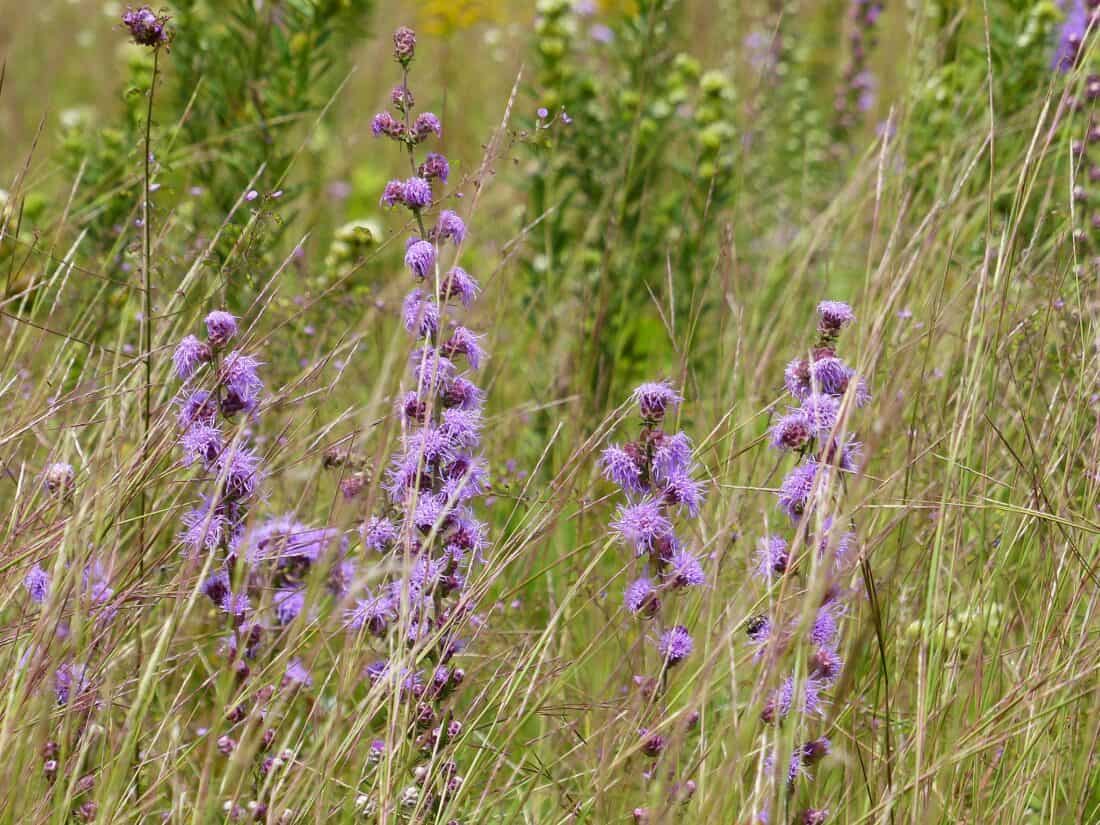
A few other Little Bluestem growing notes – (from Rochelle)
- I’ve been growing little bluestem in my garden in New England for a few years. It is remarkably adaptable to the intermittent pockets of clay soils that I encounter in my yard. This grass really does seem to thrive in a wide range of soil conditions.
- I’ve been experimenting with Big Bluestem as well to see if I prefer one over the other and to figure out firsthand which is better in a variety of applications and conditions. (I’ll update this post as I have more conclusions).
- If you are aiming for the Piet Oudolf look – you are probably going to need to plant more grasses than you think. You will likely need to go higher – but start with 50% of your plants being grasses – even in a small garden.
- Schizachyrium scoparium ‘Standing Ovation’ is a newer variety of little bluestem that was selected for its higher, more upright habit. Standing Ovation stays a little cleaner and more uniform than the straight variety and might be a better choice if you want a more formal appearance.
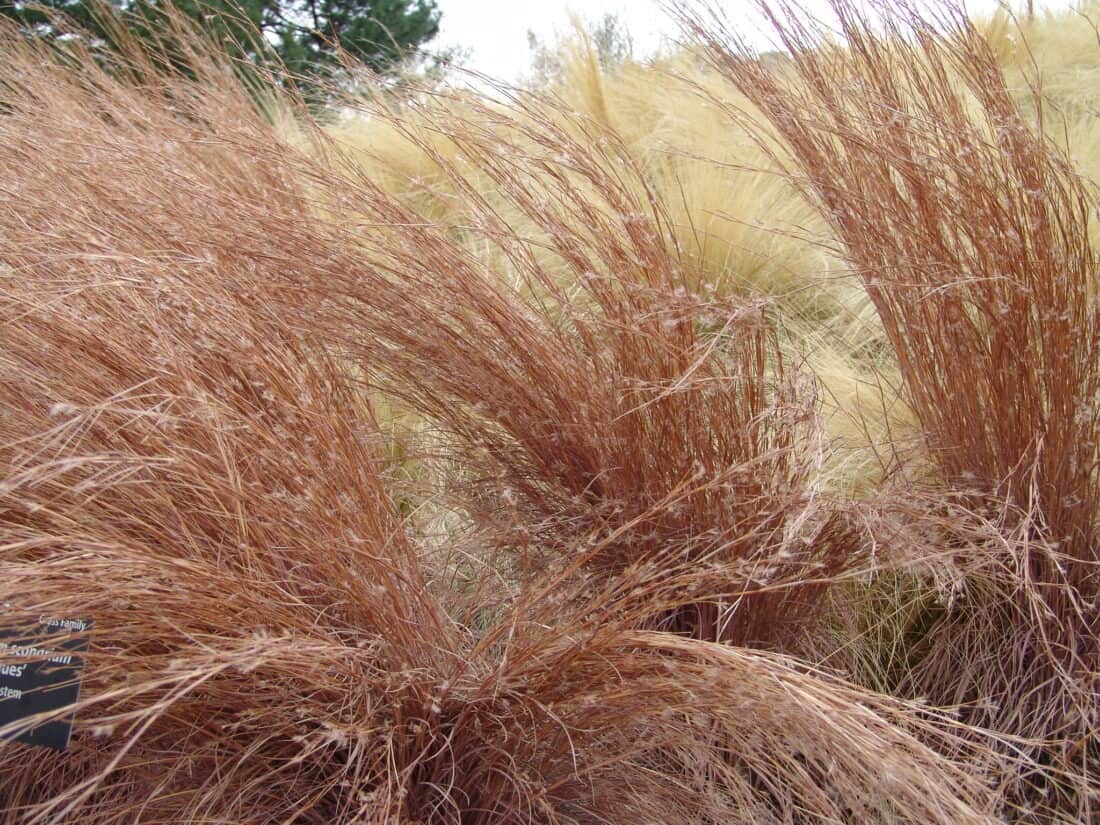
More Grass and native plant posts:
comments +